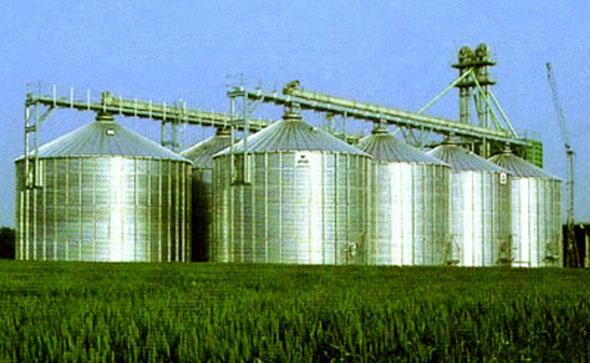Prabhupada, Vrindavana, October 25, 1976: […] Manda-bhagya. There is no sufficient grains. Formerly even in the villages you would see that a common man has very good stock of foodgrains and cows, dhanvena dhanavan, gavaya dhanavan. Formerly the standard of richness was considered how many morai, the bank, what is called? Where grain is stocked? Silo.

"Formerly even in the villages you would see that a common man has very good stock of foodgrains and cows, dhanvena dhanavan, gavaya dhanavan."
So in India it is called morai, grain stock. And how many cows one has got in stock. Then he is rich man. Nowadays how much paper money he has got. Actually it has no value. Suppose you have got some papers. Each paper it is written there “one thousand dollars.” But if there is no grain, what will this one-thousand-dollars paper will do? […]
![]()
US corn reserves expected to fall to 15-year low
As cars slurp up the ethanol, people are going hungry
Fri Apr 8, 10:40 am ET | ST. LOUIS – Rising demand for corn from ethanol producers is pushing U.S. reserves to the lowest point in 15 years, a trend that could lead to higher grain and food prices this year.
The Agriculture Department on Friday left its estimate for corn reserves unchanged from the previous month. The reserves are projected to fall to 675 million bushels in late August, when the harvest begins, or roughly 5 percent of all corn consumed in the United States. That would be the lowest surplus level since 1996.
The limited supply is chiefly because of increasing demand from ethanol makers, which rose 1 percent to 5 billion bushels. That’s about 40 percent of the total crop.
But the increase didn’t alter the agency’s overall estimate, mostly because livestock producers are expected to scale back their corn purchases.
The Agriculture Department estimated that demand from livestock producers fell 1 percent to 5.15 billion bushels.
Crops prices rose about 1 percent to $7.67 during morning trading, shortly after the report was released. The price of soybean rose 1 percent to $13.80 a bushel. Wheat was virtually unchanged at $7.76 a bushel.
Corn prices affect most products in supermarkets. Corn is used to feed the cattle, hogs and chickens that fill the meat case, and it is the main ingredient in cereals and soft drinks.
source: The Washington Times







Speak Your Mind